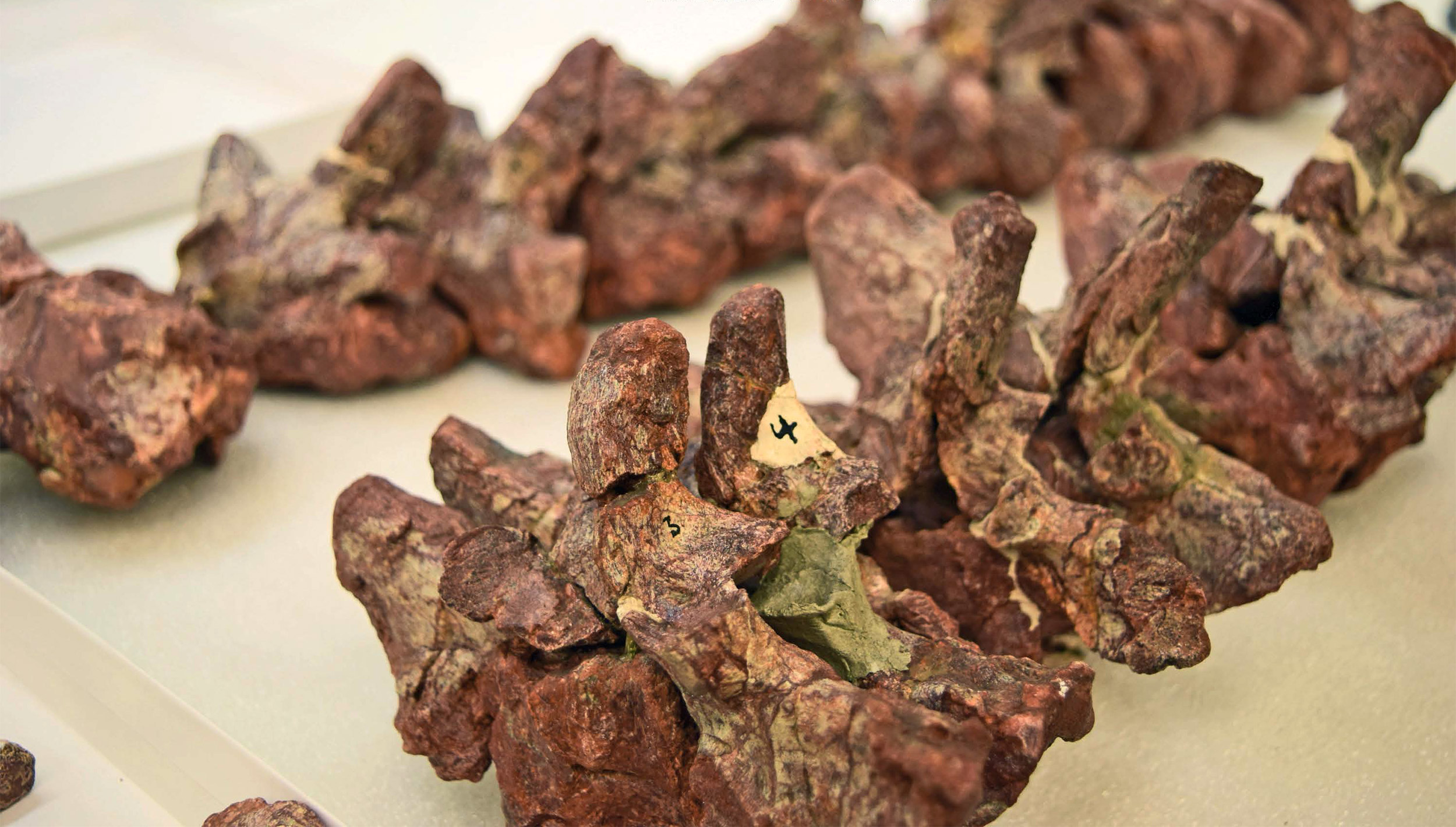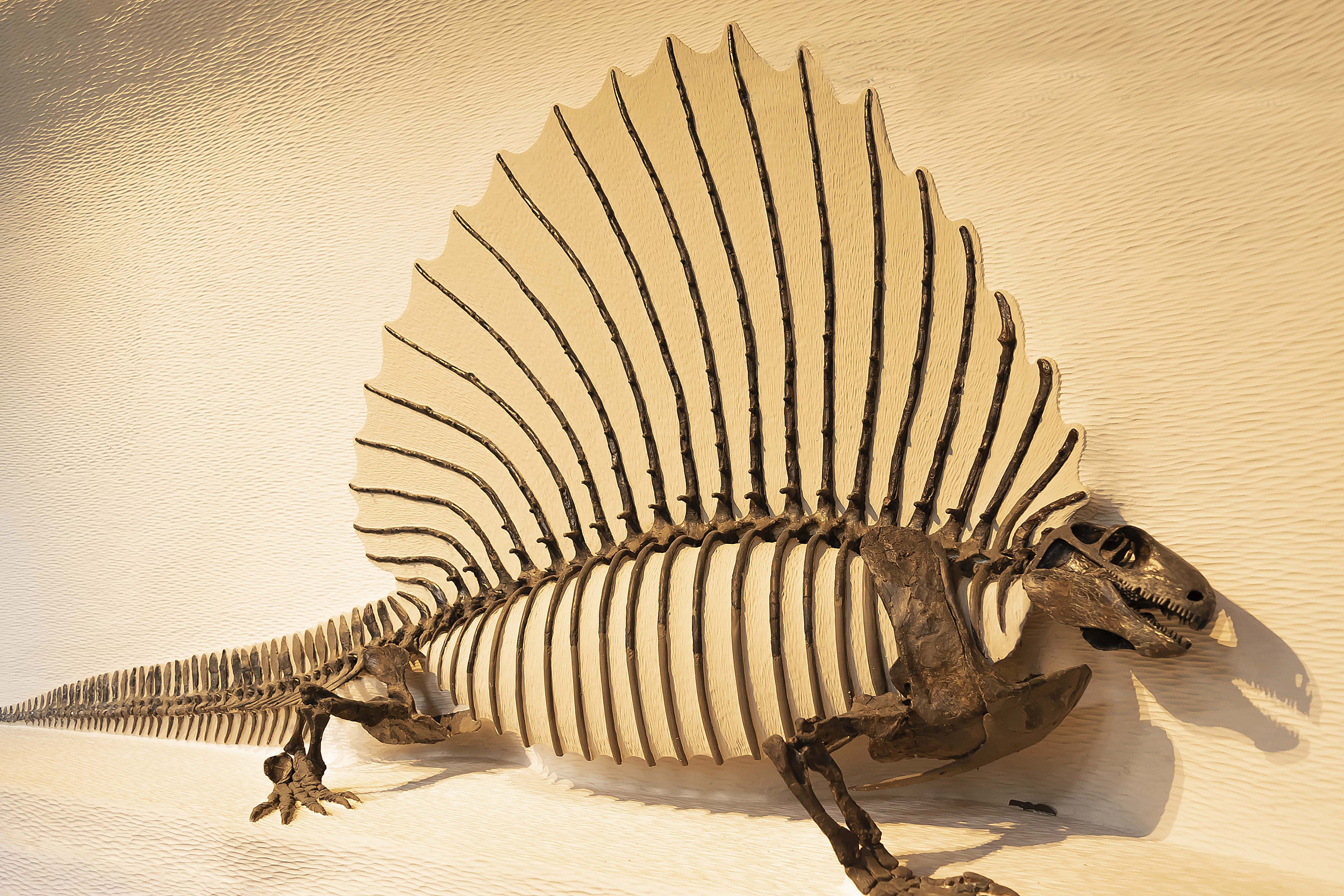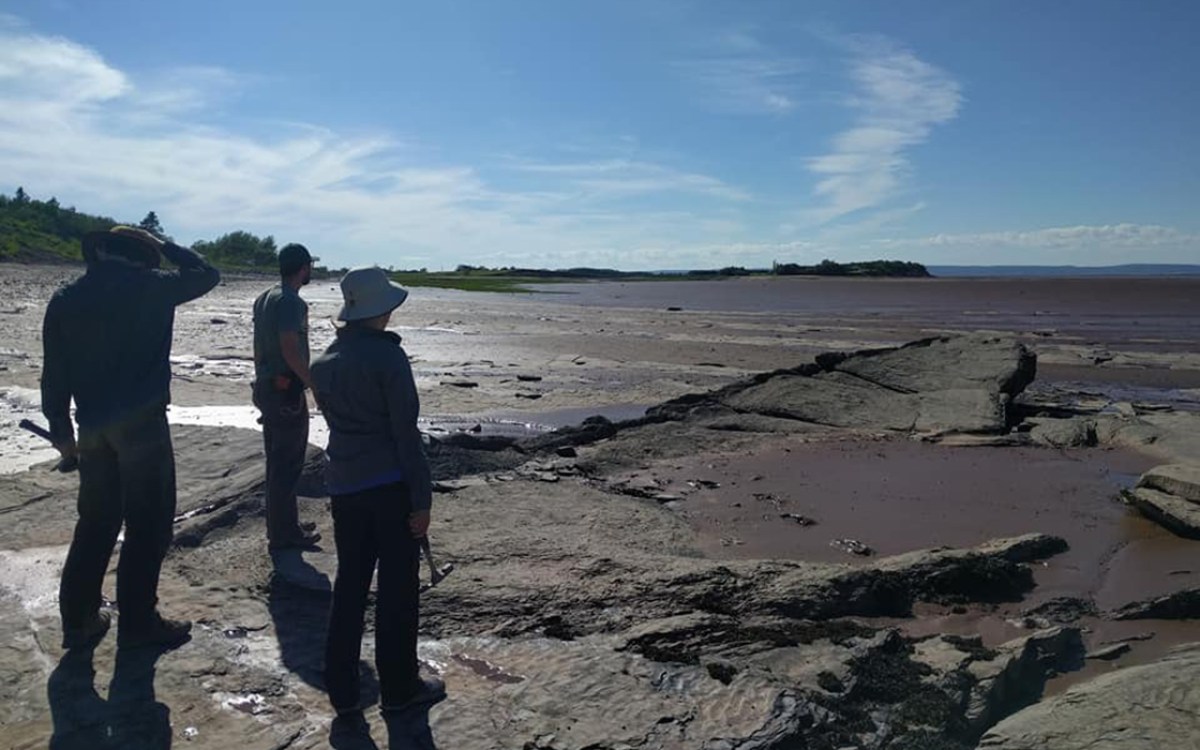
A fossil vertebrae from an ancient mammal ancestor Dinodontosaurus.
Stephanie E. Pierce/Harvard Museum of Comparative Zoology
Breaking down backbones
Study examines how mammal backbones changed during evolution
Just about any elementary school student can rattle off the characteristics that make mammals special: They’re warm-blooded, have fur or hair, and nearly all are born alive.
A new study suggests mammals are unique in one more way — the makeup of their spines.
Led by Associate Professor of Organismic and Evolutionary Biology and curator of vertebrate paleontology Stephanie Pierce and postdoctoral researcher Katrina Jones, the study challenges the notion that specialization in mammal backbones dates back to the earliest land animals. The research is described in a September paper in Science.
“The spine is basically like a series of beads on a string, with each bead representing a single bone — a vertebra,” said Pierce. “In most four-legged animals, like lizards, the vertebrae all look and function the same. But mammal backbones are different. The different sections or regions of the spine — like the neck, thorax, and lower back — take on very different shapes. They function separately and so can adapt to different ways of life, like running, flying, digging, and climbing.”
To understand how those specialized regions came to be, Pierce and Jones decided to look back at the fossil record.
“There are no animals alive today that can record the transition from a ‘reptile-like’ ancestor to a mammal” said Jones, the lead author of the study. “To do that we must dive into the fossil record and look at the extinct forerunners of mammals, the nonmammalian synapsids.”
But studying fossils isn’t easy.

Reconstruction of Edaphosaurus, a primitive mammal ancestor. The backbone has incredibly long spines, forming a sail along its back.
Stephanie E. Pierce/Harvard Museum of Comparative Zoology
More like this
“Fossils are scarce and finding extinct animals with all 25-plus vertebrae in place is incredibly, incredibly rare,” Jones explained. To tackle this problem, the researchers combed museum collections from around the world to study the most perfectly preserved fossils from some 320 million years ago.
Pierce and Jones, along with co-author Ken Angielczyk from the Chicago’s Field Museum, examined dozens of fossil spines, as well as more than 1,000 vertebrae from living animals, including mice, alligators, lizards, and amphibians.
The goal was to test if mammal spinal regions were as ancient as previously thought, or if mammals were doing something unique.
“If vertebral regions had remained unchanging through evolution, as hypothesized, we would expect to see the same regions in the nonmammalian synapsids that we see in mammals today,” said Pierce.
The evidence suggests that isn’t the case. When the researchers compared the positioning and shape of the vertebrae, they found something surprising — the spine gained regions during mammal evolution.
“The earliest nonmammalian synapsids had fewer regions than living mammals.” Jones explained.
Around 250 million years ago, a new region evolved in close proximity to the shoulders and front legs, as dramatic changes began to appear in the forelimbs of animals known as nonmammalian therapsids. Those simultaneous changes, Pierce and Jones believe, likely occurred in conjunction with changes in how creatures walked and ran.
“There appears to be some sort of cross talk during development between the tissues that form the vertebrae and the shoulder blade,” Pierce said. “We hypothesize that this interaction resulted in the addition of a region near the shoulder as the forelimbs of our ancestors evolved to take on new shapes and functions.”
Later, a region emerged in the ancestor of modern mammals near the pelvis.
“It is this last region, the ribless lumbar region, that appears to adapt most to different environments,” added Pierce. That final step in building the mammal backbone may be linked to changes in Hox genes, the genetic blueprint for laying out spine regions early in development.
“What I think is exciting here is that we’ve been able to make connections between changes to the skeletons of extinct animals and ideas from modern development and genetics,” Jones said. “This combined approach is helping us to understand what makes a mammal a mammal.”
“Mammals can be found on continents and in oceans around the world,” said Dena Smith, a program director in the National Science Foundation’s Division of Earth Sciences, which funded the research. “Looking into the ancient past, an early change in mammals’ spinal columns was an important first step in their evolution. Changes in the spine over time allowed mammals to develop into the myriad species we know today.”
This research was supported with funding from the National Science Foundation and an AAA Postdoctoral Fellowship.






